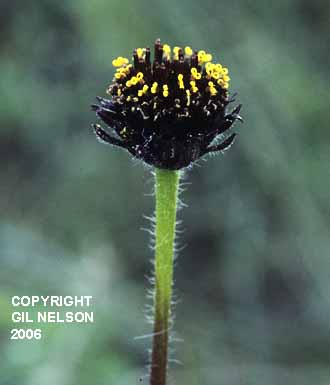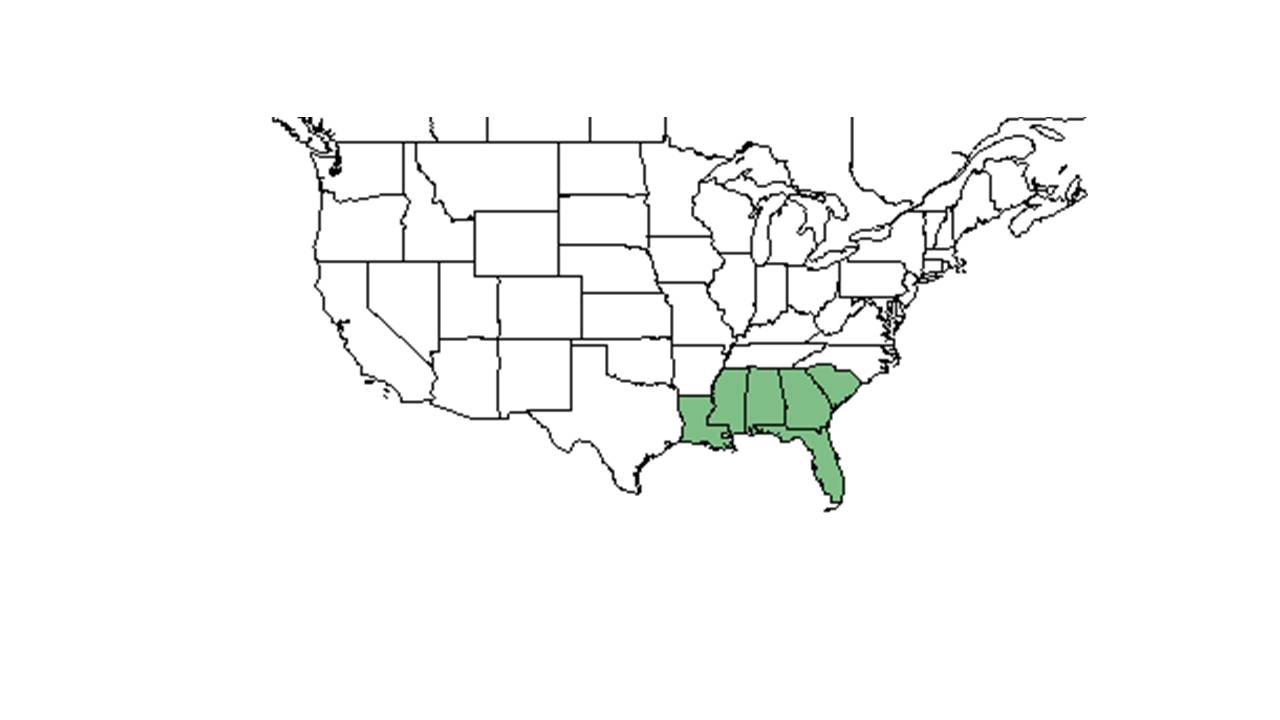Helianthus radula
| Helianthus radula | |
|---|---|

| |
| Photo was taken by Gil Nelson | |
| Scientific classification | |
| Kingdom: | Plantae |
| Division: | Magnoliophyta - Flowering plants |
| Class: | Magnoliopsida – Dicotyledons |
| Order: | Asterales |
| Family: | Asteraceae ⁄ Compositae |
| Genus: | Helianthus |
| Species: | H. radula |
| Binomial name | |
| Helianthus radula (Pursh) Torr. & A. Gray | |

| |
| Natural range of Helianthus radula from USDA NRCS Plants Database. | |
Common name: rayless sunflower
Contents
Description
A description of Helianthus radula is provided in The Flora of North America.
Helianthus radula is a perennial herbaceous species.
Distribution
Ecology
Habitat
H. radula can live in loblolly or slash pine communities,[1] upland longleaf pine communities, [2][3] pine-oak sandhill woodlands, near the edges of bogs, limestone glades, and mixed oak-cabbage palm hammocks (FSU Herbarium). Additionally, it occurs in disturbed areas such as roadsides, old fields, power line corridors, by trails, and in lawn and waste areas (FSU Herbarium). This species seems to prefer semi-shaded areas, and occurs on mostly wet to dry sandy soils, or over limestone (FSU Herbarium).
Phenology
Flowering and fruiting has been observed in August through November (FSU Herbarium).
Seed dispersal
Seed bank and germination
Fire ecology
This species has been found in habitat that is burned frequently (FSU Herbarium), even biennially.[3]
Pollination
Use by animals
Diseases and parasites
Conservation and Management
Cultivation and restoration
Photo Gallery
References and notes
Florida State University Robert K. Godfrey Herbarium database. URL: http://herbarium.bio.fsu.edu. Last accessed: June 2014. Collectors: Loran C. Anderson, Roomie Wilson, Delzie Demaree, C. Ritchie Bell, F. H. Sargent, Samuel B. Jones, John W. Thieret, Almut G. Jones, A. F. Clewell, R. K. Godfrey, Bruce Hansen, JoAnn Hansen, Robert L. Lazor, R. Kral, J. P. Gillespie, R. E. Perdue, Jr., Paul L. Redfearn, Jr., Kurt E. Blum, D. B. Ward, S. S. Ward, John B. Nelson, G. R. Knight, Cecil R Slaughter, Nancy E. Jordan, R. A. Norris, and R. Komarek. States and Counties: Florida: Bay, Calhoun, Citrus, Flagler, Franklin, Gadsden, Holmes, Jefferson, Lake, Leon, Levy, Liberty, Madison, Nassau, Okaloosa, Orange, Osceola, Putnam, St Johns, Taylor, Wakulla, and Walton. Georgia: Thomas. Louisiana: Tangipahoa and Washington. Mississippi: Jackson, Lamar, and Pearl River. South Carolina: Colleton.
- ↑ Yager, L. Y., M. G. Hinderliter, et al. (2007). "Gopher tortoise response to habitat management by prescribed burning." The Journal of Wildlife Management 71: 428-434.
- ↑ Kirkman, L. K., M. B. Drew, et al. (1998). "Effects of experimental fire regimes on the population dynamics of Schwalbea americana L." Plant Ecology 137: 115-137.
- ↑ 3.0 3.1 Gilliam, F. S., W. J. Platt, et al. (2006). "Natural disturbances and the physiognomy of pine savannas: A phenomenological model." Applied Vegetation Science 9: 83-96.